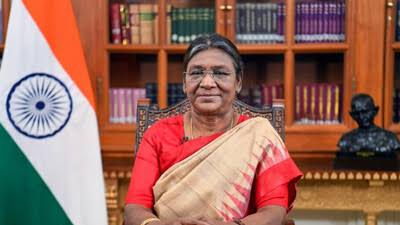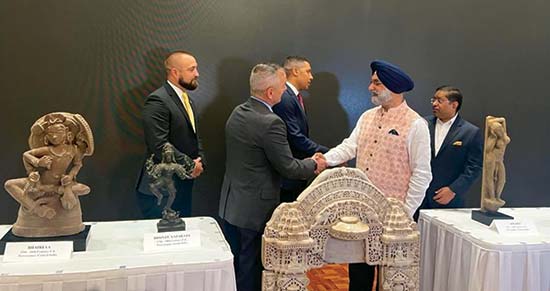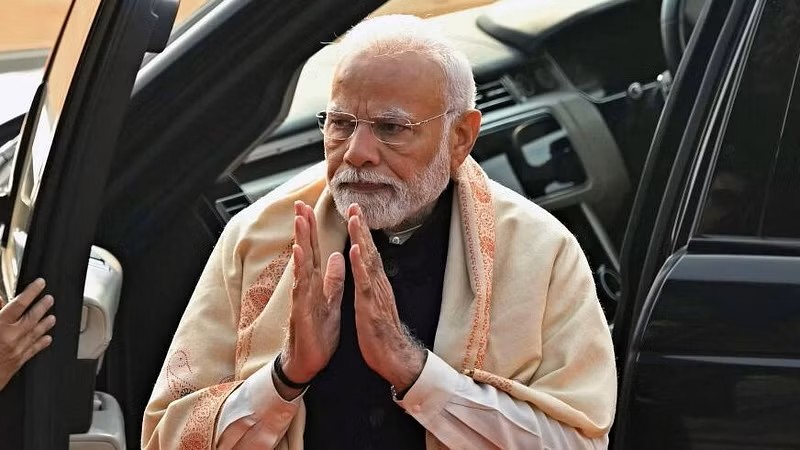President Droupadi Murmu arrived in Bhubaneswar, Odisha, this afternoon from Raipur, Chhattisgarh, and embarked on a journey that held deep cultural and spiritual significance. Upon reaching Nayagarh, she visited the revered Lord Nilamadhab Temple, offering prayers and seeking blessings. The temple, with its rich history and spiritual importance, stands as a symbol of Odisha’s deep-rooted traditions, and the President’s visit reflected her deep respect for the cultural heritage of the region.
 Following her temple visit, President Murmu attended the foundation day ceremony of the Bharatiya Biswabasu Shabar Samaj at Kaliapalli. Addressing the gathering, she spoke warmly about the breathtaking beauty of the region, emphasizing its immense potential as a tourist destination. She expressed optimism that with the right infrastructure development, the area could attract more visitors, benefiting not only pilgrims but also the local economy. Encouraging community participation, she urged the people to take an active role in shaping Nayagarh’s future, particularly in sectors such as agriculture, handicrafts, and tourism.
Following her temple visit, President Murmu attended the foundation day ceremony of the Bharatiya Biswabasu Shabar Samaj at Kaliapalli. Addressing the gathering, she spoke warmly about the breathtaking beauty of the region, emphasizing its immense potential as a tourist destination. She expressed optimism that with the right infrastructure development, the area could attract more visitors, benefiting not only pilgrims but also the local economy. Encouraging community participation, she urged the people to take an active role in shaping Nayagarh’s future, particularly in sectors such as agriculture, handicrafts, and tourism.
The President highlighted the deep connection between tribal communities and nature, emphasizing how their way of life embodies environmental consciousness. She acknowledged the reverence that tribal communities hold for forests and trees, seeing them as sacred and as the resting places of their ancestors’ souls. This philosophy, she remarked, is a powerful message for forest conservation and aligns with the broader Indian tradition of living in harmony with nature.
Recognizing the contributions of tribal communities, President Murmu reiterated the government’s commitment to their empowerment. She spoke about various welfare schemes aimed at fostering self-reliance while preserving indigenous art and culture. However, she stressed that true progress would only be possible with awareness and active participation from the people. She encouraged the community to stay informed about these initiatives and take full advantage of the opportunities available to them.
The visit was not just an official engagement; it was a heartfelt interaction with the people, reflecting the President’s deep commitment to the well-being of tribal communities and the preservation of cultural heritage. Her words resonated with the gathering, leaving a message of hope, development, and shared responsibility for a brighter future.




